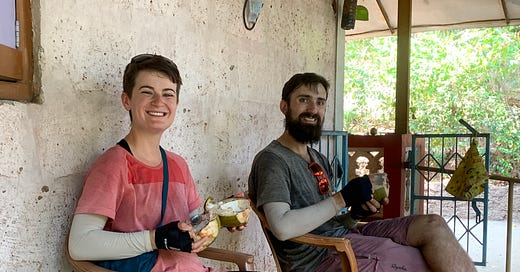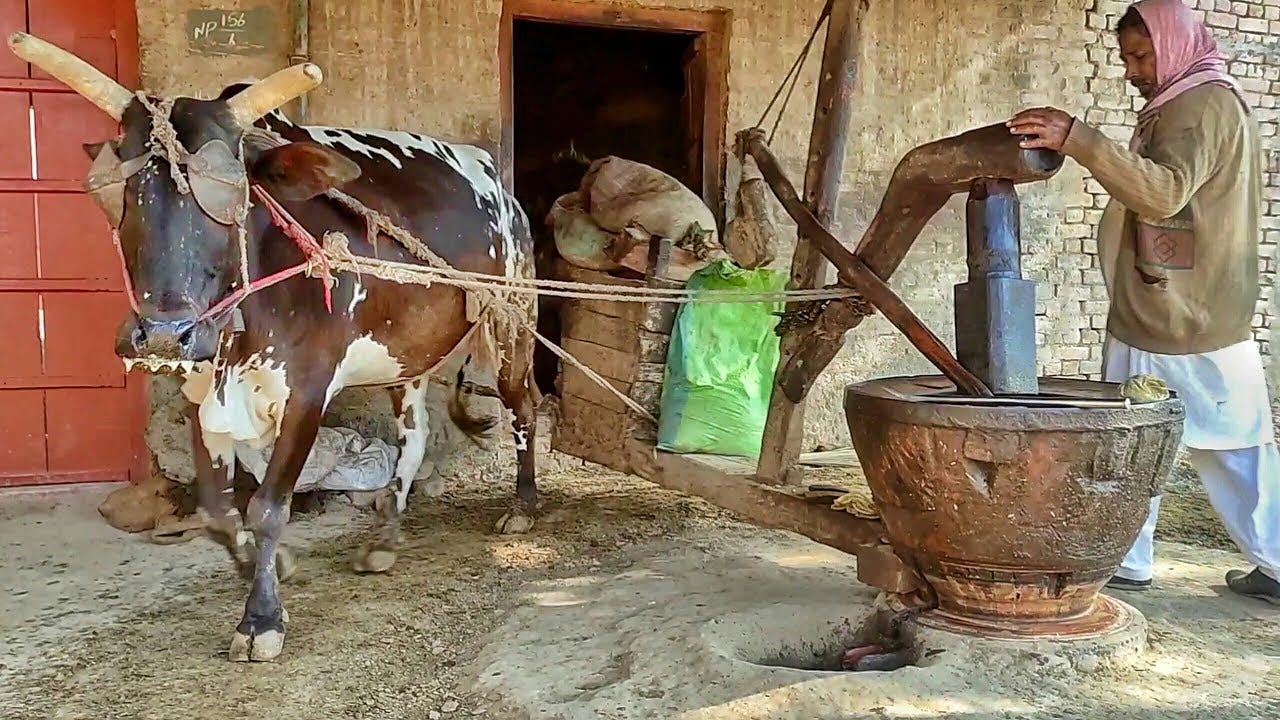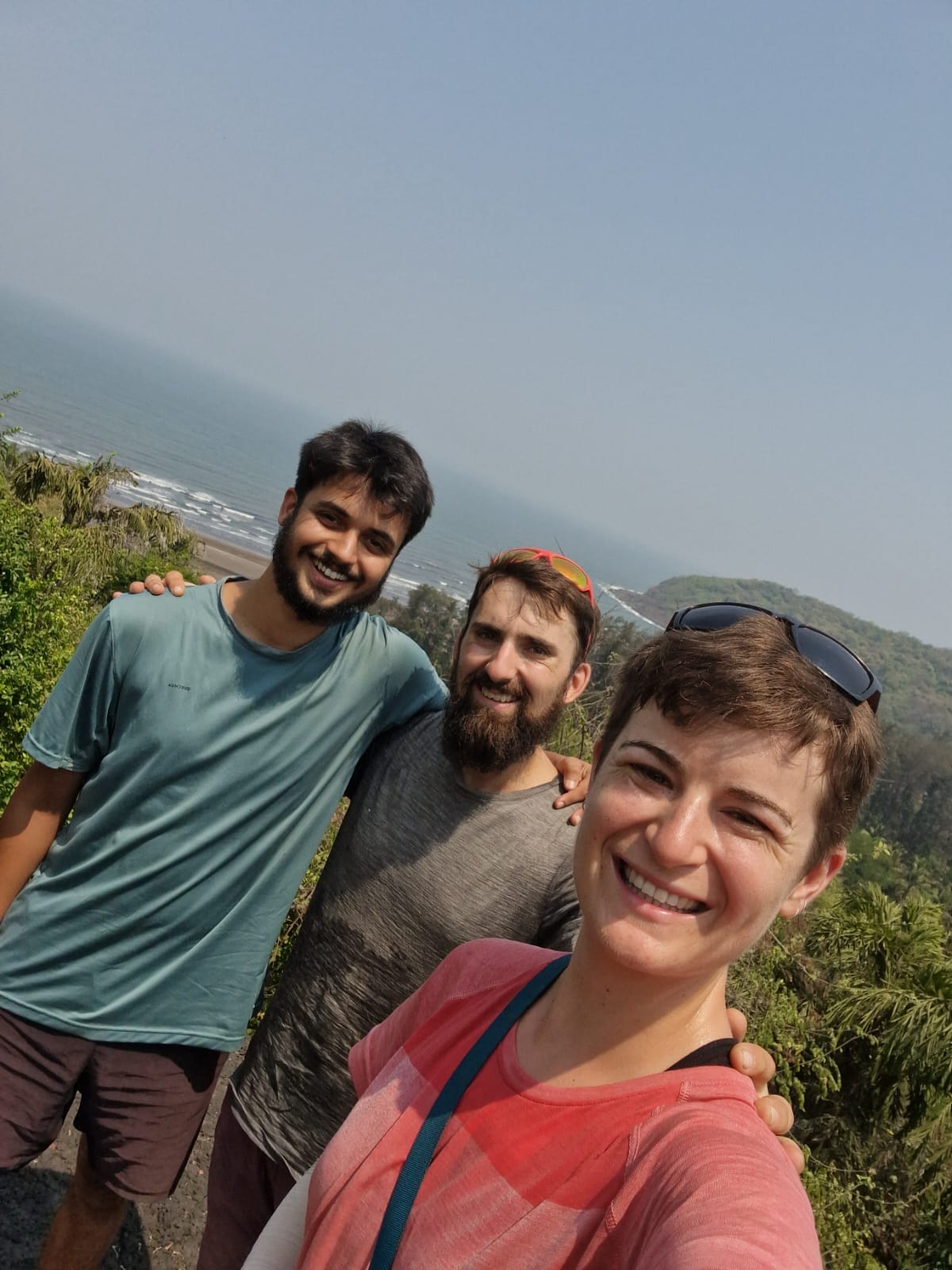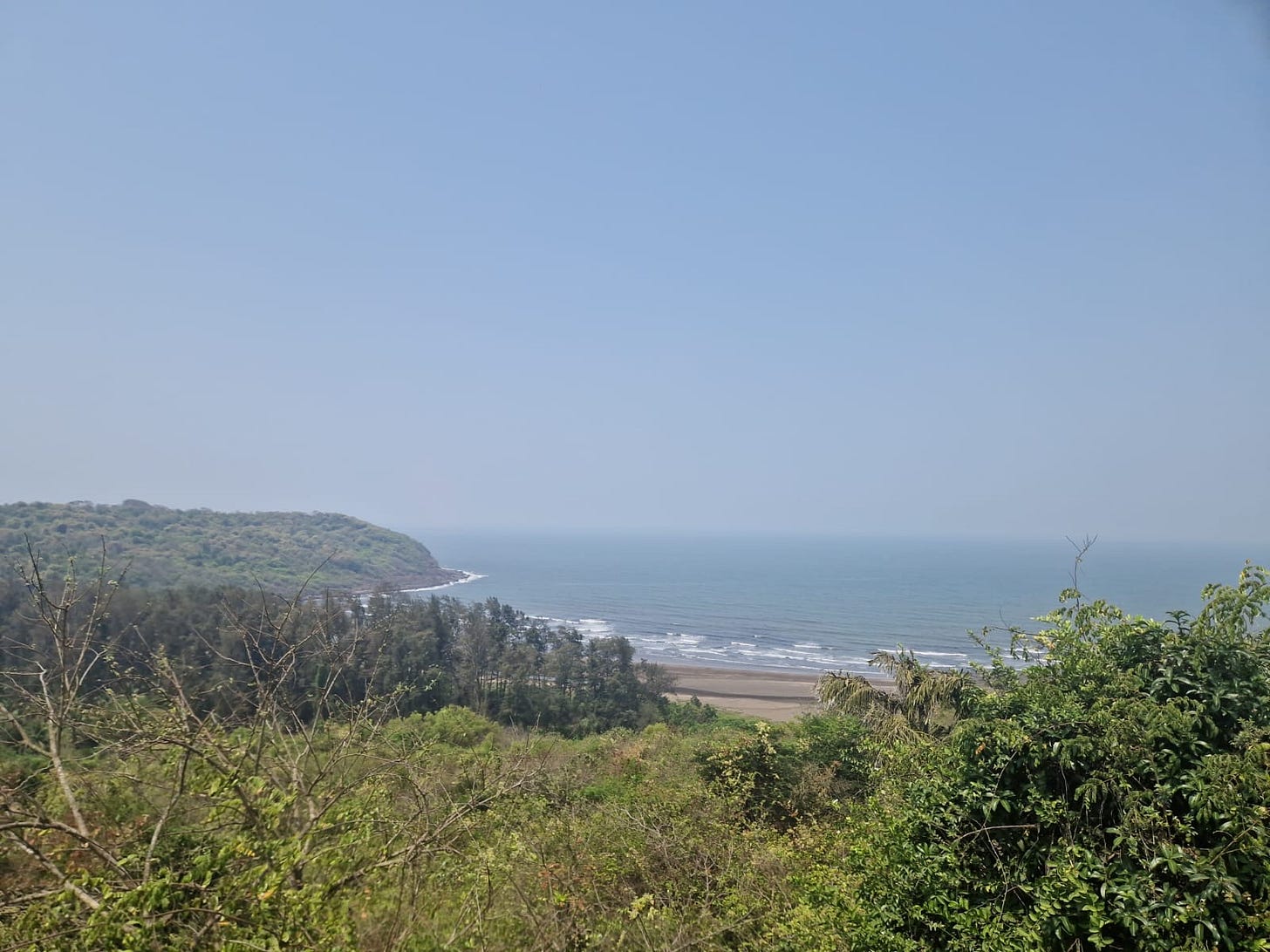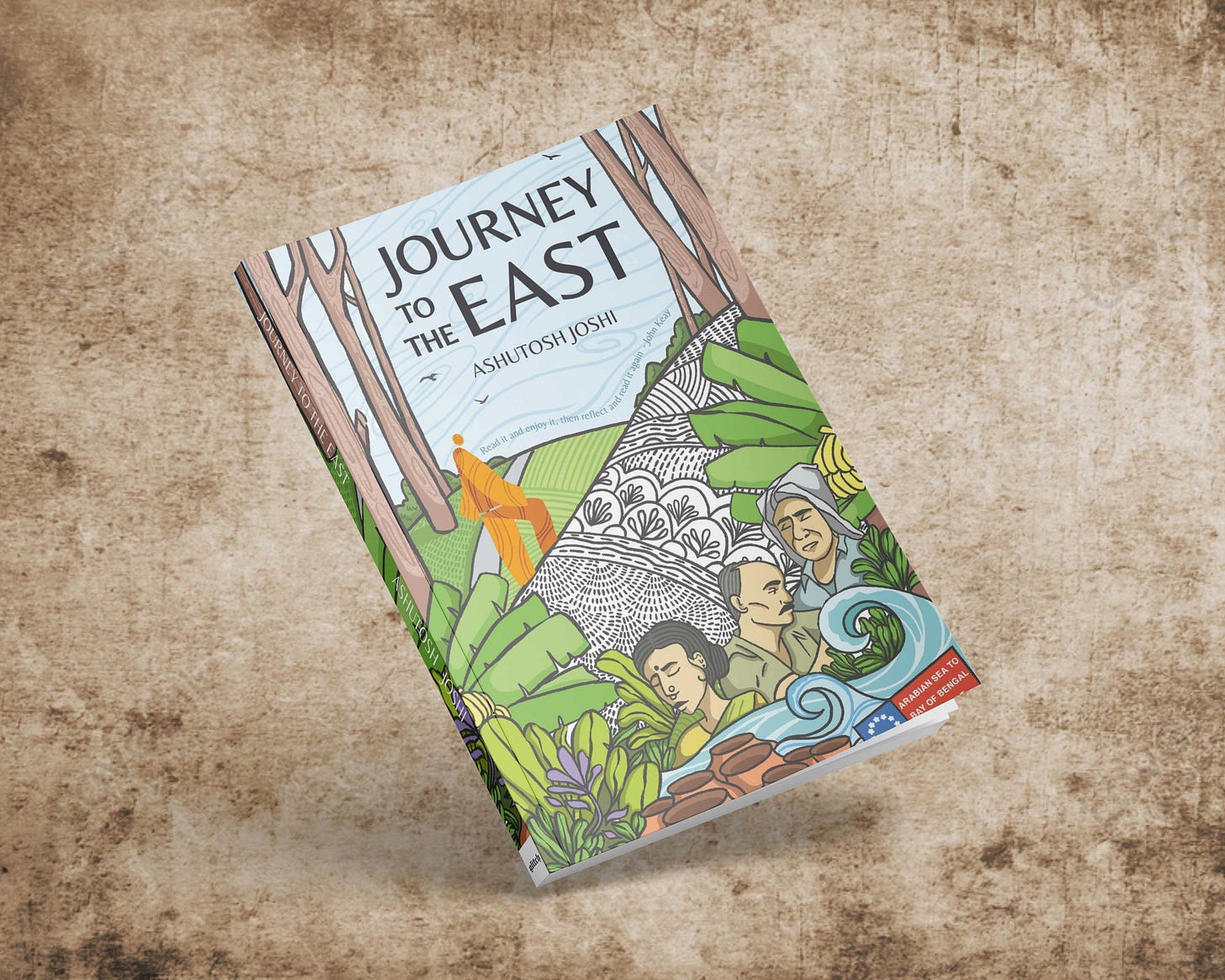A few days back I received a DM on my instagram.
“Hi Ashutosh, I found you through Simon and Laura's (We Ride Bikes Places) YouTube video and your grandparents’ house looks amazing. We are two cyclists from England who are cycling from Singapore to London! We are currently in Ganpatipule and riding up to Delhi. Where do you live? It would be great to come and visit you along the way.”
I instantly replied, “Sure! Come this way.”
I have always liked the idea of meeting people who are on the go and my own journeys would have been impossible if people would have not opened their home to me. Last year, I saw Simon and Laura cycling through Narvan, and after driving past them, I thought, why not ask them if they need a breather. I always wanted for someone to come and ask me that question and it would only be apt if I do the same to others, who are in my place. Simon agreed. They entered our house as total strangers but left it as family. That’s the thing. We aren’t really different, apart from our skin colour and language.
Last night I received a message, ‘We are leaving early morning. Could we catch up mid-morning?’
I sent out a location and asked them to enquire for my grandfathers’ or my name once they hit the village.
In the morning, a family member who lives in the market, called my grandma.
“There are two tourists. They don’t look Indian. They were asking directions to your house. I have tried to make some hand gestures, but ask Ashu to go ahead and receive them.”
Indians are not used to such types of travelling. Cycling, although growing in urban areas, hasn’t become widely popular as it is in the West. So it is obvious that Indians wont understand why people like to cycle around— especially in the middle of a heat wave. The idea to take these long breaks from life, to re-invent, to find purpose in life, is not really common in India. Although, India is one of the few countries who had it in its culture to leave ones family behind and become a “sanyasi” (wandering monk)- purely to find meaning and purpose in life. I find myself lucky enough to have had the opportunity to start backpacking when I was 19. None of my friends from my school have solo backpacked and that tells a lot. This phase of my life when I slept in hostels all around India and met travellers from all over the world, gave me a new perspective on how one should live and perceive at the world. It is only when you have travelled abroad- away from home- that you can develop an eye to watch your home in a different way.
Julia and Tom were looking around for our house when I saw them. I introduced myself and asked them to follow me through the canopy of trees that leads to our house.
First things first, “Coffee?”, I asked, as they were settling into their seats.
Both agreed in an instance.
When I lived in England, black coffee was the most normal thing. I woke up, boiled some water and made a hot, fresh cup of coffee to kick-start the day. But here in India, coffee is almost never black. It is usually made up of milk and sugar. Oh yes! Lots of sugar!! So, I know how important it is to get a cup of strong, black coffee when you are travelling.
I apologized because this wasn’t the best coffee. It was nescafe. The worst coffee in India, but, for some reason, the most available. They kindly accepted it.
Julia, 25, is a graphic designer who works with charity organisations in England and Tom, 27, works on two jobs, one of which is a firefighter. Tom never went to university, and as soon as he mentioned that, I gave him a nod of respect.
Education is important, but universities have become a breeding ground for culture war and the lack of original thought in the western universities was appalling to me. I have massive admiration for those who have chosen to stay away from the universities, and get a job to secure financial freedom, rather than getting an education loan and living in order to repay it throughout your life. I say this because I am guilty of this.
“So how was your journey?”, I asked.
They started from Kolkata where they volunteered for a few weeks at the Mother Teresa mission. It was a revelation for Tom. He had suddenly found himself in the middle of the Indian mind.
So, you’d ask, is their really an Indian mind? To an extent, yes there is.
Maybe J. Krishnamurthi would have been the right person to answer that question.
There are two distinct ways of looking and perceiving the world. The Eastern or the Asian/Indian mind, for the longest time was more inclined in understanding the nature of the self and hence was inwardly driven. Whereas the western mind was more focused on the outside world and hence materialistically driven. This simple difference is huge when you take into consideration the impact that it has on evolving cultures, ways of life and thinking. Indian mind likes chaos, whereas the western mind is practical and rational in its approach. And although the Indian mind has turned materialistic due to the Americanization of its culture, it still holds remnants from its past.
Tom found himself in that chaos, where everyone was talking at once, where there was a lack of private space, where anyone could barge into conversations without saying sorry or thankyou. The smells, the colours, the traffic, the honking -that is a whole new world for someone who is witnessing it for the first time.
“Wifi?”, I asked.
“No. We are good”, said Julia.
They were sitting in the verandah that looks out at the betelnut and coconut plantation. Many birds fly from one tree to another. Wind blows mildly making sound as it passes the leaves. “Cuccudkombda” (a bird that I don’t know what is called in English) makes sounds every few minutes. All that is enough to keep one busy. It is almost as if we are always in a movie, but we never get time to sit back and watch it. I was impressed after hearing that they were staying away from internet and instead enjoying or rather witnessing the reality as it is.
We spoke of Politics, of Caste distinction, of corruption, of technology, while knowing very well that none of this had stopped us from exploring the world. These are just the problems that we all face, collectively, then be it in any part of the world.
“Would you like to walk up to a secret spot?”, I asked.
Many travellers have stopped in Narvan, and I have always made it a habit to share some hospitality with each and every one of them. I try to imagine myself in their shoes. How would I like to be treated if I was in their place?
They agreed in an instance.
I took them to the edge of the farm to show some of the fencing work, reminding that this was the most interesting thing happening at the farm. We then walked up the hill, through the mango plantations, into the jungle. The huge banyan tree was watching us from the top as we gently strolled past her vines that had turned into roots. Crickets and bugs made noises at a timely pace— maybe they were alarming everyone else that a few strangers had entered the jungle. The trees overhead were offering some much needed shade in an otherwise hot and humid climate. It was close to 45 degrees. We were passing through Babu Teli’s farm when Julia exclaimed, “What is this thing?”
A huge hole, about 20 ft diameter had arrested Julia’s attention. It was an old well dug by the Teli’s to provide water to their mango plantation. Although in a destitute state these days, this well was the source of livelihood for the Teli’s when they lived in these jungles. The word “teli” literally means the ones who draw out oil. Teli’s had traditionally been the ones who produced oil. In its hay-day, a bull was tied to a circular circuit where its movement pressed the product of which oil was to be made. Ever since they have settled in the village, around the human civilisation, this well has been forgotten. This was certainly in the middle of nowhere and dug deep- surely something to marvel upon.
As we walked further up, a few dogs greeted us with their barks. We quietly moved past them, hinting that we meant no harm. Jumping across a stone wall, we finally reached a dead-end. I asked Tom to now follow my lead and I bent down to enter into the bushes. Thorns had covered the spot that I call “secret”.
It was really my little secret. I discovered this place when I was a kid. As we would come up the hill to graze cattle, we would be left with nothing to do once the cattle were off grazing on the open field. We would then walk around the edges of the mountain to collect berries and wild-fruits. One day, while wanting to take a glimpse at the sea, I kept moving further through the thorny bushes, when I finally stumbled across an opening. It led me to two massive rocks that overlooked the sea in the distance. One step ahead and I would fall some 200 ft down. These rocks had a hidden lair in the bottom, which was once used by the ancestors to rest. An opening just behind this lair circled around the mountain, all the way to the foot of the mountain. I remember feeling like Indiana Jones. Since that time, the volcanic rock, that was meticulously carved by millions of years of erosion, had become a dear friend to me— when I needed some isolation, he would always be there for me.
Tom and Julia came along, pushing away the thorns that stuck to their t-shirt. We jumped on the volcanic rocks and sat down in a squat position. We were three random people sitting on a rock, overlooking the sea and the surrounding coconut trees, marvelling at the sheer coincidence that had brought us here. I know, Julia and Tom were together, but I think at some point in their life, they too would have been strangers. To be honest, even if we know someone, we are quite strangers even then. We can never totally know what’s happening in the other person’s mind. Moments passed by while none of us spoke a word. That silence was actually soothing, as if the volcanic rock and the sea were speaking to us in that moment.
“Why do the leaders not understand the importance of this beautiful environment?”, Tom questioned.
“Maybe they aren’t conscious enough to watch it like we do, they don’t have ‘time’ to wander in the jungles. Money has cast a spell on them, making them forget their place in this world.”
The wild nature that surrounded us was so bountiful and extravagant, that Tom and Julia had found it mind-boggling that the Indian government was planning to industrialize it and carpet it with roads.
“This is sad”, Julia remarked. She was quiet until now, but maybe the vast sea had opened her up.
“What do you plan to do in the future?”, they both asked in unison.
To be honest. I have never really thought so far ahead. I thrive on uncertainty. When things get certain, my life gets boring. As for my plans, I wish to live in the village and fight out this battle. I know the potential that sustainable tourism can bring to this place. It might as well hold the key to saving the nature surrounding this place. I am not doing it for others, I am actually doing this for myself. I am the one who wants to live close to nature. I want the people around me to not lose their culture and their traditional wisdom. I want to live in a space which honours individual dignity and not a collective hive mindset. I want to have a community that thrives alongside nature. This is why I am doing all this. I hope that someday my writing starts earning me enough money, so I don’t have to think of going to metro-cities and working on photo/video assignments. I can then live peacefully in Narvan and focus on all the above.
“I know this sounds quite selfish”, I said, squinting my eye and looking out at the sea, “but it’s the best that I can come up with.”
We listened to the waves crashing on the rocks that had once been part of this very mountain that we squat on today.
“Do you believe in God?” I asked.
“Not really, but we trust in nature”, they said.
“That’s one and the same”, I remarked.
We were walking down through the steps carved in the volcanic rock. It was a strange co-incidence that had got us together, that too only for a few hours at best, but it was enough to make us cherish it. Tom and Julia left one their bikes only after my grandma had forced them to drink fresh coconut water that Sanju dada had picked while we were out.
They had a long way to travel. After India they will be travelling through central Asia, Eastern Europe, to finally end in the UK. So, even though I wanted them to stay for a bit longer, I did not insist. I asked them, just before leaving, what message will you give to the ones sitting at home watching this video or reading this…
LEAVE THE FEAR AT HOME AND JUST START TRAVELING. THE WORLD IS AN OPEN AND WELCOMING PLACE.
That’s an apt way to put it. The noise of the world can sometime shun our ears, making us think that the world is at war at all times. But, such journeys remind us that all that is only happening virtually and it doesn’t really bother us, in our personal life anyway. Sit on a rock and you realise how simple it is to marvel at the grandness of this wonder. How magical all this is. Turn into a rock and you forget all your problems. You can then live forever, just like that rock overlooking the sea….
Here’s Julia and Tom’s Instagram account, if you wish to give them a follow - https://www.instagram.com/pedallingbikes/
Thanks for reading. If you are still here, I would take this moment to direct your attention to a book I have written. This book is almost 2 years in the making. In 2022 I left off on a walk across India and ended up walking 1800 km from Narvan on the west shore, to Visakhapatnam on the east shore. Initially to document the issues plaguing rural India, the project unfolded to become an unforgettable voyage of self-discovery; involving sleeping in unfamiliar places, venturing alone through the Naxalite insurgent jungles, and even being interrogated in a jail cell.
After contemplating on what is the right way forward, I have come to the conclusion that I will self-publish it- and I did. If you are interested in reading about my journey and supporting me to become a full-time writer, please consider buying “Journey to the East”- which is currently available through my website. www.ashutoshjoshi.in
If you would like to help me out in other ways, you can buy me a coffee via paypal, www.paypal.me/ashutoshjoshistudio. You would think that a couple of dollars/pounds won’t mean much, but it does, especially in India.
You can buy my first book “Journey to the East”, a memoir about an 1800 km walk through India, through my website .
If you would like to buy prints of my photographs, you can choose the photographs you like on my website and send me an email. I will send you custom quotes for the sizes you’d like.


